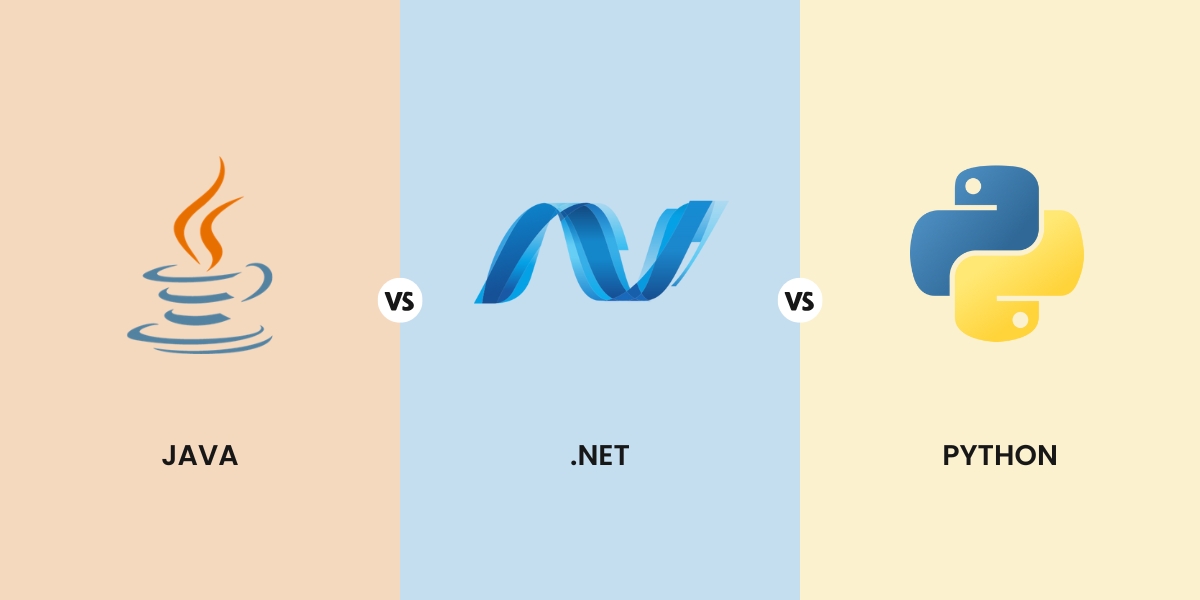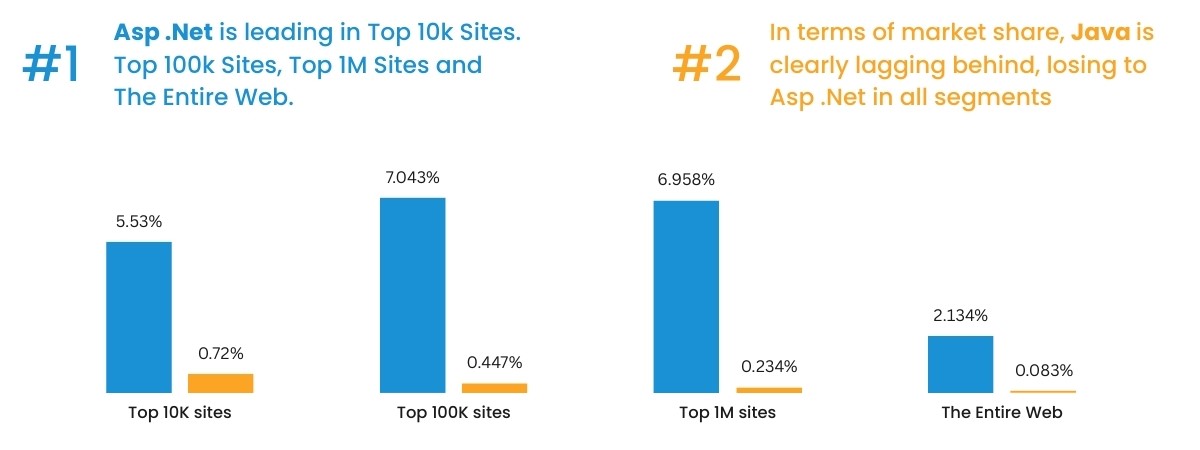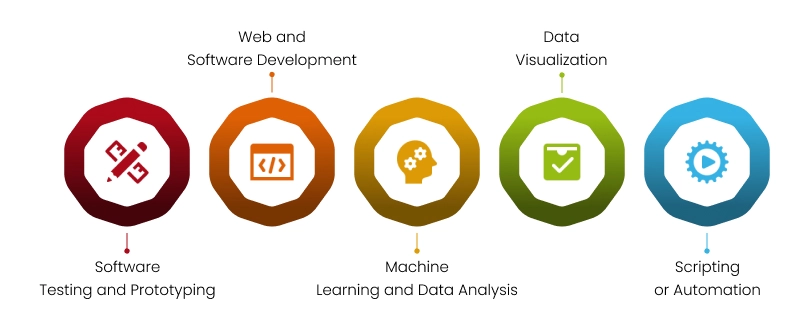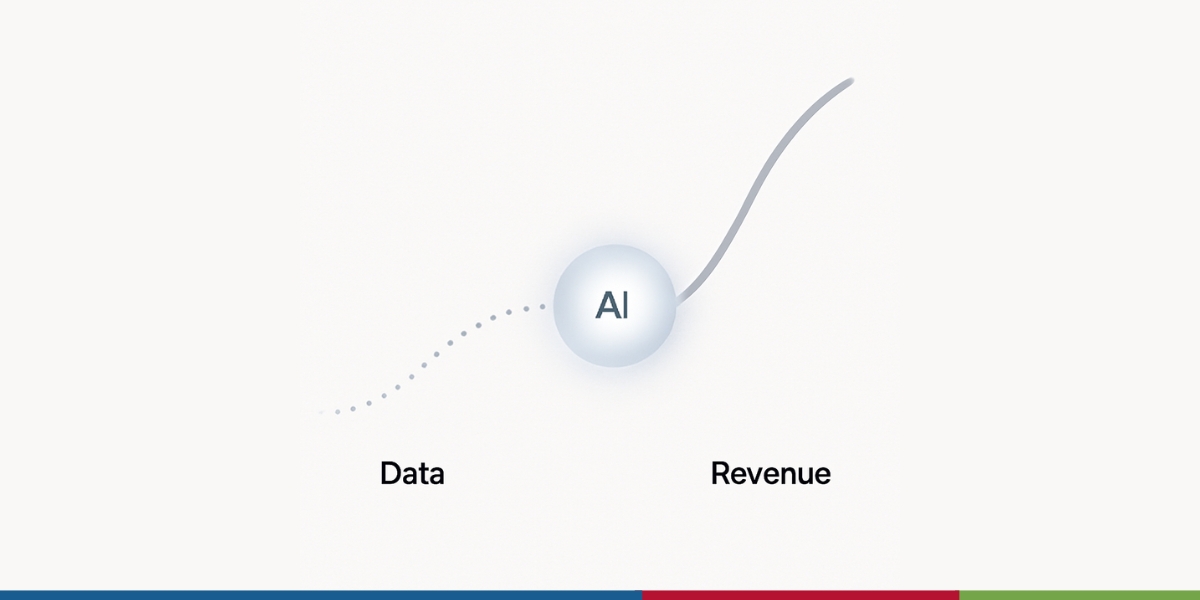Java, .NET or Python: What to Choose in 2025

4 min read | By Postpublisher P | 21 April 2025 |
In 2025, Statista shows Python is the third most used programming language, while Java is in seventh place with 30.55% usage.
Choosing between .NET, Python, or Java in 2025 depends on your project goals. Java is very reliable and is often used in large systems that require strong security, like banking applications. .NET, supported by Microsoft, is great for building web, desktop, and cloud-based applications. Python remains the most popular language to learn in 2025 and is widely used in data science, artificial intelligence, and fast web development.
Java
Java is a popular programming language to write server-side applications. Java has portability and reliability associated with it and also provides an opportunity for developers to write code once and execute it anywhere through the use of Java compiler, which translates source code into platform-independent bytecode. Java is employed to create interactive java applications, web services, and software development trends.
Market share by Top websites

Key features of Java






What kind of applications can be developed with Java?
Java is a programming language that is trending in 2025, used to build various types of applications like web app development, Android mobile apps and desktop software. Many large companies use Java for creating enterprise-level systems such as banking platforms and business management tools. Java is also suitable for cloud-based applications, basic game development, and Internet of Things devices. With the help of tools like the Java compiler and frameworks, Java ensures secure, scalable, and high-performance solutions across different industries.
Java Pros & Cons
| Java Pros | Java Cons |
|---|---|
| Platform-independent (Write once, run anywhere) | Verbose syntax makes code longer |
| Strong memory management | Slower than some compiled technical languages like C++ |
| Rich set of APIs and libraries | GUI development can be complex |
| Large community and open-source support | High memory consumption for some applications |
| Good for building scalable and secure applications | Initial learning curve for beginners |
| Object-oriented language encourages modular code | Requires installation of JDK and setup |
| Commonly applied across enterprise, mobile, and web development | Performance can be impacted by the JVM |
Java Libraries

.NET
.NET is a server-side language framework developed by Microsoft that is widely employed for the development of secure and scalable.NET applications. It is compatible with various programming languages such as C# and VB.NET and best suited for creating interactive web, desktop, mobile, and cloud applications. Being highly integrated, having rich libraries, and rich security features,.NET makes enterprise-level solution development easy. It is generally preferred in backend development for where performance, stability, and compatibility with the Microsoft platform matter most.
In 2025, Python, JavaScript, and Java were the most sought-after programming languages, and recruiters were searching for individuals familiar with these skills for around 40% of their needs.
Key features of .Net







What kind of applications can be developed with .Net?
.NET is utilized for creating numerous kinds of applications on different platforms. It is best to be used for constructing web applications, desktop applications, mobile applications in Xamarin, as well as cloud-based solutions that integrate with Azure. Popular companies using .NET include those in enterprise environments where interactive applications, server-side apps, and large-scale systems are required. .NET is utilized mostly in industries calling for secure as well as scalable solutions like banking, medical applications, and electronic commerce.
.Net Pros & Cons
| Pros | Cons |
|---|---|
| Supports multiple programming languages (C#, F#, VB.NET) | Can be less efficient on non-Windows platforms |
| Ideal for server-side and interactive applications | Slightly steeper learning curve for beginners |
| Integrated development environment with Visual Studio | Memory usage can be high for big applications |
| Excellent support for web, desktop, mobile, and cloud-based applications | Frequent updates may require adaptation time |
| Strong integration with Microsoft tools and Azure | Limited flexibility compared to some open-source technologies |
Python
Python is an easy, straightforward language to comprehend. It is utilized to create webpages, mobile python applications, and data science and artificial intelligence tools. Python is well-liked due to the fact that its code resembles straightforward English, making it perfect for new learners. Python assists developers in constructing interactive programs with ease. Python is compatible with various systems and is frequently utilized for server-side operations. Due to Python compilers, the programs execute finely, which is a suitable option for most projects.

Key features of Python






What kind of applications can be developed with Python?
Python can be applied to develop various kinds of applications. It is wonderful to develop websites with frameworks such as Django and Flask. It is also applied extensively in data science, where it is utilized in the analysis and visualization of data. Python is capable in artificial intelligence and machine learning, which aids in the development of intelligent applications. It is applied by developers to automate tasks, develop desktop applications, as well as develop simple games. Due to its simplicity and adaptability, Python is employed across numerous domains such as finance, education and healthcare.
Python Pros & Cons
| Pros | Cons |
|---|---|
| Easy to learn and read | Slower execution speed compared to compiled languages |
| Large community and support | Not ideal for mobile development |
| Great for data science and AI/ML | High memory usage |
| Versatile and used in many industries | Dynamic typing can lead to unexpected bugs |
| Tons of libraries and frameworks | Weak in mobile computing and browsers |
.Net vs Java vs Python performance Comparison Table
| Aspects | .NET | Java | Python |
|---|---|---|---|
| Type | A server-side framework supporting many languages such as C# | A solid object-oriented server-side language | A high-level interpreted language |
| Platform Support | Cross-platform (Windows, Linux, macOS using.NET Core) | Platform-independent (using JVM) | Cross-platform |
| Performance | High performance, particularly for Windows-based apps | Strong performance for enterprise-scale apps | Lowish performance but well-suited for rapid development |
| Ease of Use | Learning curve is moderate with Visual Studio support | Learning curve is moderate with a great emphasis on structure | Easy to use and learn owing to simplistic syntax |
| Application Types | Web, desktop, mobile, gaming, enterprise | Web, Android, desktop, enterprise systems | Web, AI/ML, data science, scripting, automation |
| Development Tools | Visual Studio, Rider | IntelliJ IDEA, Eclipse | PyCharm, Jupyter, VS Code |
| Community Support | Supported by Microsoft, increasing open-source support | Large, world-wide open-source platform | Extremely active community with broad learning resources |
| Best Use Cases | Enterprise-level Windows apps, APIs, interactive apps | Cross-platform applications, Android, big systems | Data-driven apps, AI/ML projects, automation tools |
The latest from our editors
Join over 150,000+ subscribers who get our best digital insights, strategies and tips delivered straight to their inbox.


